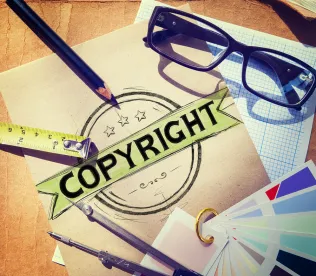Copyright protects original works of art, but not useful articles. The line between the two at first glance seems clear, but is quickly blurred when artistic elements are incorporated into a useful article. The Copyright Act’s protections are limited to the artistic elements, i.e., “pictorial, graphic or sculptural” features, of useful articles. But, the artistic elements must be “identified separately” from and be “capable of existing independently of” the article’s utilitarian aspects. See 17 U.S.C. §101.
On Wednesday, March 22,2017, the Supreme Court resolved widespread disagreement among lower courts when it ruled that decorative elements of a useful article—a cheerleading uniform—could be protected by copyright law. The decorative elements included designs on the uniforms that were arrangements of chevrons, lines, curves, stripes, angles, diagonals, coloring and shapes.
The Court Held: A feature incorporated into the design of a useful article is eligible for copyright protection only if the feature (1) can be perceived as a two- or three-dimensional work of art separate from the useful article, and (2) would qualify as a protectable pictorial, graphic or sculptural work if it were imagined separately from the useful article into which it is incorporated. The primary question before the Court was how to decide when a feature exists independently.
The first requirement—separate identification—is fairly straightforward. “The decision-maker need only be able to look at the useful article and spot some two- or three-dimensional element that appears to have pictorial, graphic or sculptural qualities.”
The second requirement—independent-existence—is the more difficult of the two. “The decision-maker must determine that the separately identified feature has the capacity to exist apart from the utilitarian aspects of the article.” The element must be able to exist on its own as protectable expression once it is imagined apart from the useful article. Put another way, if the element is protectable expression on its own or when embodied in some tangible medium other than a useful article, it is separable. Of note, the Court clarified that separability is only a conceptual undertaking. Some courts had also considered “physical” separability—whether a feature can “be physically separated from the article by ordinary means while leaving the utilitarian aspects of the article completely intact.” But the focus of the separability inquiry is on the extracted features, the Court said, not on any aspects of the useful article that remains after the imaginary extraction. Therefore, the Court abandoned “physical” separability.
To be sure, the Court was careful to limit its ruling—“the only feature of the cheerleading uniform eligible for a copyright in this case is the two-dimensional work of art fixed in the tangible medium of the uniform fabric.” The copyright owner has no right to prohibit any person from manufacturing a cheerleader uniform of identical shape, cut and dimensions to the ones on which the decorations appear. The Court also did not express an opinion on whether the uniform decorations are sufficiently original to actually qualify for copyright protection, just that it was not disqualified by reason of application to the cheerleading outfits. On remand, the trial court must determine whether the designs are sufficiently original to be copyrighted.
Justice Breyer was joined by Justice Kennedy in a dissent that expressed concern that the decision exceeded the scope of the copyright statute and extended copyright protection where Congress had not done so. The dissenting Justices observed that Congress has not extended broad copyright protection to the fashion design industry, but this has not left it without protection. Justice Breyer stated the fashion industry has thrived using protection afforded by design patents, trademarks and copyrights for original textile designs. The Court’s decision “risk[s] increased process and unforeseeable disruption in the clothing industry, which in the United States alone encompasses nearly $370 billion in annual spending and 1.8 million jobs.”
The dissent’s foreboding may come true if clothing manufacturers press cases against clothing retailers selling imitations or derivations of original designs, leading to new disputes over the extent of separability. In any event, copyright for original textile designs, for example, on a bolt of cloth or anything made with that cloth, remains unchanged. So do trademark actions involving clothing, which still require proof of secondary meaning, lack of functionality and likelihood of confusion.






 />i
/>i

